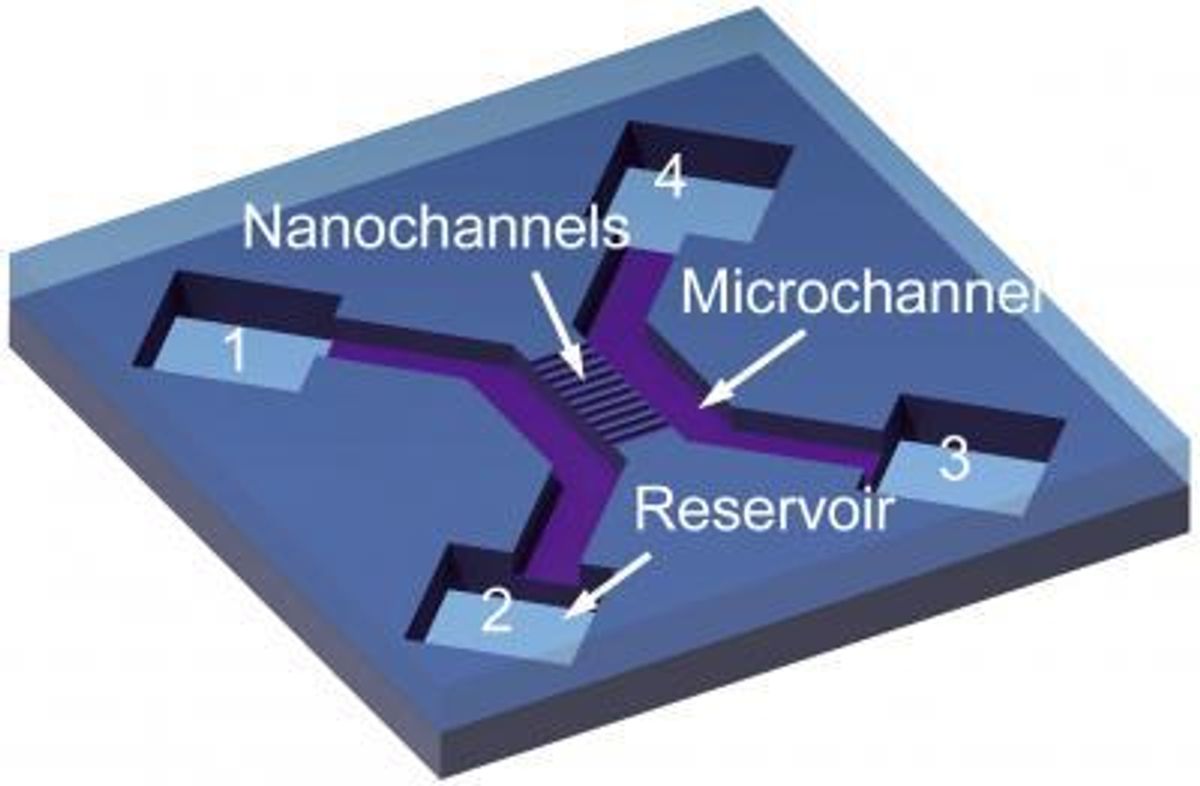Sometimes the aim of high technology is just to approximate what nature does. That certainly is the case with channels found in transmembrane proteins, which manage to allow the passage of ions or molecules but block larger objects. It has proven difficult to fabricate channels that duplicate the properties of these biological channels. That is until now.
Researchers at the Department of Energy’s (DOE) Lawrence Berkeley National Laboratory have developed a way to produce these channels that are only 2nm wide and do it with standard semiconductor manufacturing techniques. They also managed to ensure that the channels don’t collapse under the strong electrostatic forces of one of the semiconductor processes.
To fabricate the channels Majumdar and Duan used a technique that involved ion etching combined with an anodic bonding process. As alluded to earlier, the researchers were able to overcome the strong electrostatic forces of the anodic bonding process by using a thick oxide layer (500nm) that they deposited on the glass.
"This deposition step and the following bonding step guaranteed successful channel sealing without collapsing," says Duan.
One of the things that the researchers observed that was quite remarkable was how differently the 2nm wide channels behaved to those that were 10nm wide.
“We observed a much higher rate of proton and ionic mobility in our confined hydrated channels -- up to a fourfold increase over that in larger nanochannels (10-to-100 nm),” explains Majumdar in the Science Daily piece. “This enhanced proton transport could explain the high throughput of protons in transmembrane channels."
What I like about this story is that the early applications for this technology look to be in the area of improved batteries, especially the lithium-ion variety and fuel cells. The researchers believe that ion transport could be improved by these 2nm channels because because of their geometrical confinements and high-surface-charge densities. In terms of batteries, by using these nanostructures as a separator between the cathode and anode in batteries they could prevent physical contact between the electrodes while allowing free ionic transport."Current separators are mostly microporous layers consisting of either a polymeric membrane or non-woven fabric mat," Duan says. "An inorganic membrane embedded with an array of 2-nm hydrophilic nanochannels could be used to replace current separators and improve practical power and energy density."
Dexter Johnson is a contributing editor at IEEE Spectrum, with a focus on nanotechnology.




